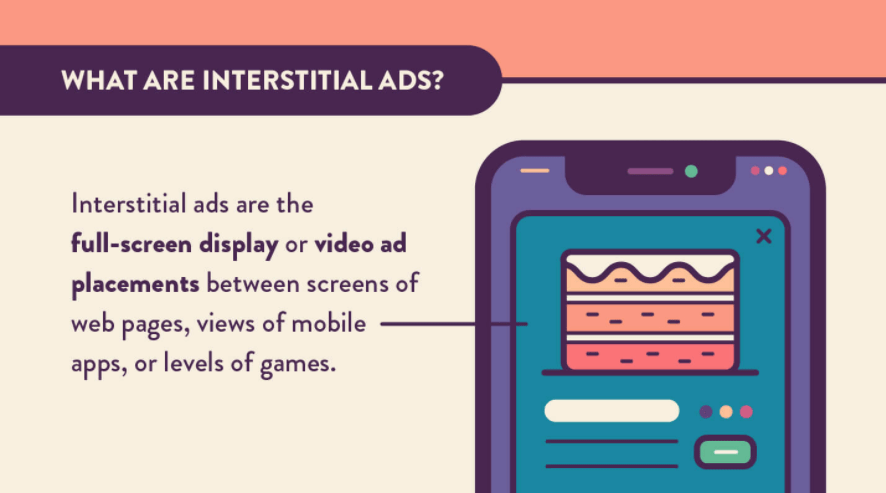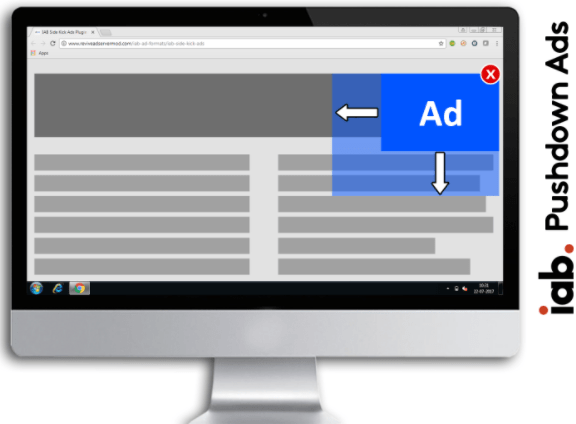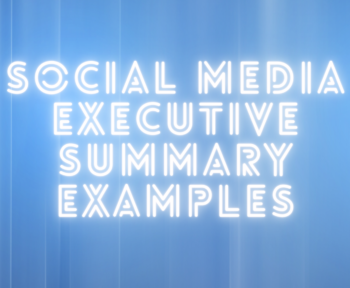Table of Contents
What is rich media advertising?
Rich Media is a digital advertising term for an ad that includes more advanced features such as video, audio, or other elements that encourage viewers to interact and watch with the content.
What is Rich Media Ads?
In the simplest sense, rich media is any form of digital advertising that includes many interactive elements, such as video, audio, or others designed specifically to promote consumer interaction.
Google’s DoubleClick Studio defines it as a “digital advertising term for advertising that includes advanced features such as video, audio, or other content that promotes viewership.”
Rich Media allows advertisers and marketers to create sophisticated ads that can easily trigger user reactions. Using HTML5 technology, ads can contain different layers of content in a single placement.
Since Rich Media uses many interactive elements such as audio, video, and live video for advertising, it offers endless opportunities for advertisers to deliver their messages in an effective and credible manner.
And why so?
If you look at the traditional form of advertising, it uses only text, images, and Flash animations, which makes it less capable of interacting with customers.
Rich media advertising markets, on the other hand, have the flexibility to set the level of complexity and provide exciting ways to engage with their services or products.
In a nutshell, the features of rich media ads are as follows:
They include pictures, videos, social media episodes, and various interactive elements.
Rich media ads are also known as multimedia banners.
They integrate with mobile devices and help a lot with mobile advertising.
You can get real-time statistics on your audience’s behavior.
Types of rich media ad formats

Although these ads are available in many different formats, let’s discuss some of the most common formats used by advertisers:
1. Banner Ads
Banner ads are usually static and usually, appear on web pages.
It is possible to create highly sought-after ads by embedding various dynamic elements.
Banner ads are created and welcomed by a large audience. This is the only reason why many marketers and advertisers invest in creating banner ads.
Another reason is affordability, making it a favorite advertising choice for small and medium businesses.
Properties
- Cost per impression – from medium to high
- Less loading time
2. Interstitial ads

These are highly interactive and full-screen ads that cover the website interface. Intermediate ads are designed to appear at natural transition points (for websites) or at intervals (for gaming).
Interstitial ads are displayed with a mixture of image, text, video, and audio.
They are locked because the user can scroll through the webpage or maintain a locked state.
Interstitial ads are mostly full screen, which provides a better view and without any barrier to make sure the audience never misses it.
Locked status is best used to track user behavior.
The user may have two options: close the ad, continue or click on the ad to reach the relevant webpage.
Intermediate ads also support HTML-5 elements and banner videos.
Properties
- CPM – from medium to high
- Visibility-high
3. Pushdown Ads

Unlike other rich media ads, Push Down ads do not extend in size.
The ad will be displayed as a teaser on the webpage. Interested users can click or hover over it. By doing so, the ad pushes the content down to fully display the webpage.
The main advantage of this ad is that it does not hide the content on the webpage and therefore generates more ad views. Learn about CVR
Properties
- The cost per impression is high
- Visibility- High
- Loading time – more
4. Ads with multi-directional extension
The multi-directional format is relatively new in the world of advertising.
This type of advertising spreads according to its location on the web page.
If the ad is placed on the right side of the page, it will automatically expand to the left or vice versa when the user clicks on it.
Since these types of ads are relatively new, they are not in great demand in the market right now.
Properties
- High price for every impression
- Visibility-high
5. Lightbox Ads
Lightbox Ads are innovative display ads launched in 2013 by the Google Display Network (GDN).
This is an ideal option when you are actively pursuing customer engagement. They help to capture the attention of customers with multiple images, videos, or a combination of both.
How it works is very impressive. Learn about DOOH
The customer initially sees a small ad. It can be extended by hovering or clicking.
In the next step, the entire screen will be dimmed and a lightbox will appear, showing the full statement that the user is interacting with.
Properties
- High price for every impression
- Visibility-high
Standard media v/s Rich media

There are some notable points of difference among Standard media and Rich media which are as follows:


Where and How to Create Rich Media Ads?
HTML5 technology gives publishers the platform to create these ads. And tools out there allow users to add intriguing elements to them. Here’s some guidance on how to create rich media ads that look fun and playful along with which tools you can use to create them.
Where?
Tools such as Google Web Designer, Bannersnack, Bannerflow, AdCanvas, MadYourself allow you to develop some nice-looking rich media ads. Most of these tools offer free usage to some extent.
And some might even help you with readymade templates. If you’re somebody with a knack for design, platforms like Adobe (Animate CC4, Flash Builder) can lend you a helping hand. Likewise, Gimbal is widely known as a tool for creating mobile-specific rich media ads.
How?
A. Choose an HTML5 ad creator to start creating rich media ads.
B. Be ready with media-specific for your rich media ads viz. images, frames, graphics, etc.
C. Save files in formats like JPG, PNG, or SWF to keep the file size in control.
D. Add the needful media to your ad creator; whether banner or mobile.
E. Follow the platform’s user interface as it leads you to create the ads.
Measuring the performance of rich media advertising

The important advantage of using these ads is that marketers and advertisers come up with specific metrics to assess the results of their efforts.
Some of these are:
1. Impressions
It’s related to how often your ad appears on a web page. Keep in mind that the impression does not necessarily mean that the visitor actually saw the ad.
Being an ad blocker and imposing one ad on another can sometimes give the wrong warning.
While it may not have much value, it does help in calculating other metrics that may help.
2. Engagement rate
This is the percentage of impression interaction in the ad unit. The engagement rate is calculated by the formula. Learn about engagement rates in detail.
Engagement rate = (number of interactions / total impressions) x100%.
3. Access
It depends on the number of people your ad can reach. Reach count is low compared to impressions because your ad is also shown multiple times to the same person.
4. Performance time
This corresponds to the average time that an ad appears on a web page.
5. Interaction time
This is the average time that the audience is associated with the ad.
6. Interaction rate
This can be very helpful in determining the user engagement rate. Percentage value interaction rate of users engaged with advertising.
7. Dwell rate
It measures the percentage of rich media impressions that users deliberately participate in through touch, interaction, or click.
The period of exposure of the user after the first interaction is called the living period.
8. Expansion rate
This corresponds to the ratio of total ad extensions and ad impressions.
9. Average viewing time
This represents the average length of the game compared to the total duration of the game.
10. Views
Views indicate how many times people have seen your rich media ads.
11. View rate
This divides the number of engagements your video ad has received by the total number your engagement shows.
12. Mute, Rewind, Pause, and Close
It is available in some rich media tracking systems. It tracks user movements such as Mute, Pause, Rewind, and Close while the video is playing.
13. Completions
This indicates the video end rate.
14. Conversions
It indicates the actions that visitors want to take while viewing your ads. Some examples of conversions are: Sign up for a newsletter, download a white paper, sign up for an event, etc.
15. Exchange rate
This corresponds to the number of visits expressed as the desired conversion percentage.
Exchange rate = total conversions / visitsx100.
If you have more than one conversion operation, you should do this calculation for all operations as well as for individual operations.
Best practices for rich media advertising
- To deliver an Ad, Keep the rule aka simple, If you are moving from traditional advertising to rich media ads, align with your presentation brand.
- Consult a designer or expert to keep ads attractive (basically as attractive as clicks).
- Track file size. You do not want a large file to increase your page load time.
- If demographics are relevant to you, such as region, geography, climate, language, etc., create different versions. I saw an example, but I can not say but wow. Learn about Ad units.
Final thoughts
In this fast-paced internet age, advertisers have concluded that they need to focus on the user experience as far as revenue is concerned.
While traditional advertising terms focus on words and graphics, rich media advertising explores the next level of advertising, creating user engagement and interactive content.
As more and more video ads flood the internet, the popularity of these ads has largely completely redefined customer expectations.
While we can’t say for sure that it will completely dominate traditional advertising, the future looks bright for rich media advertising.
Hope! You find our work interesting and helpful. Don’t forget to share and leave comments. Thank you.






3 Comments
dave
A really Rich piece of content. Keep it up!
inamdurrani60
thanks Dave